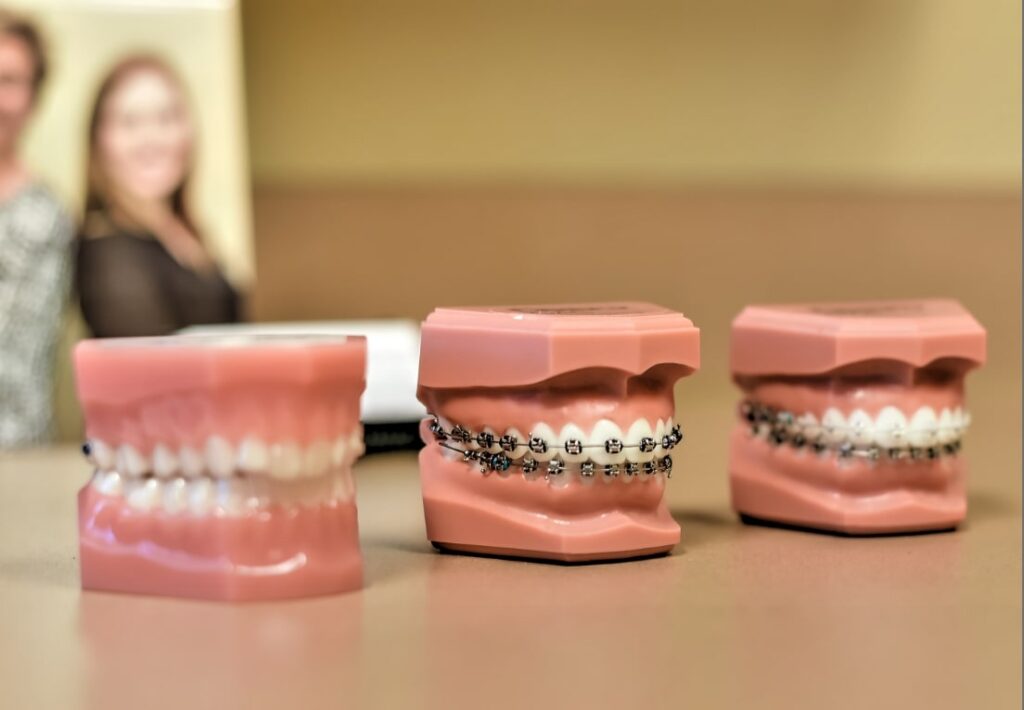The Advantages of Selecting a Cumming Orthodontist for Your Braces and Aligners
The Advantages of Selecting a Cumming Orthodontist for Your Braces and Aligners
Blog Article
Comprehensive Guide to Orthodontics Treatments for Remedying Dental Imbalances
In the realm of orthodontics, the trip to attaining a flawlessly lined up smile involves a myriad of treatments tailored to correct oral misalignments. From conventional dental braces to undetectable aligners and even medical choices, the field of orthodontics uses a variety of solutions to resolve varying levels of dental abnormalities. Comprehending the intricacies of each treatment, including their mechanisms, advantages, and potential disadvantages, is important in making educated decisions concerning one's orthodontic treatment. As we navigate through the extensive overview to orthodontic procedures for dealing with dental imbalances, the detailed details of each approach will unfold, clarifying the path toward a unified and functional oral placement.
Orthodontic Procedures Introduction

Along with conventional dental braces and clear aligners, orthodontists may additionally suggest various other interventions like headwear, palatal expanders, or retainers to address certain alignment problems (orthodontics). These procedures are customized to each individual's unique requirements and might involve a combination of therapies to attain the desired outcomes. Normal adjustments and tracking are critical parts of orthodontic treatment to make certain progress is on track and to make any type of required alterations along the road. By going through orthodontic procedures, people can not only accomplish a straighter smile but also improve their total dental health and wellness and feature.
Conventional Braces: Exactly How They Work
When considering orthodontic treatments for oral imbalances, traditional braces stand out as a tried and true approach for correcting teeth positioning. Standard dental braces are composed of braces, wires, and bands that work together to apply constant stress on the teeth, progressively moving them into the desired positioning.
As pressure is used to the teeth via the dental braces, the bone surrounding the teeth is improved to support the new tooth positions. People will certainly need regular adjustments at the orthodontist's workplace to make sure the braces continue to use the right pressure for reliable teeth motion.
Undetectable Aligners: Cons and pros
These clear, custom-made trays are basically invisible when used, making them an attractive option for individuals seeking an extra visually pleasing orthodontic therapy. Patients can eliminate the aligners prior to consuming or brushing their teeth, minimizing the threat of food obtaining stuck in the appliance and simplifying the cleansing procedure.

Surgical Orthodontic Options
Surgical treatments in orthodontics existing viable choices for attending to intricate oral misalignments that may not be properly dealt with with traditional orthodontic therapies. While typical dental braces and invisible aligners can fix numerous orthodontic problems, specific situations need surgical intervention to achieve optimal results. Surgical orthodontic options are typically recommended for severe malocclusions, significant jaw disparities, and instances where the underlying bone framework requires adjustment to accomplish proper alignment.
One common medical orthodontic treatment is orthognathic surgical treatment, which includes repositioning the jaws to deal with useful problems such as difficulty chewing or talking. This surgical procedure is commonly done in partnership with an orthodontist who aids line up the teeth prior to and after the procedure. Surgical orthodontics might likewise involve treatments to subject influenced teeth, eliminate excess gum cells, or reshape the jawbone to develop a much more harmonious face profile.
Prior to considering medical orthodontic choices, patients go through an extensive analysis to figure out the necessity and prospective benefits of such interventions. cumming braces. While surgical treatment might seem overwhelming, it can considerably boost both the function and looks of the smile in cases where traditional orthodontic therapies fall short
Retainers and Post-Treatment Treatment

Post-treatment care entails following the orthodontist's directions vigilantly. This may consist of appropriate oral hygiene methods, attending follow-up appointments, and wearing the retainers as recommended. Failing to abide by post-treatment care instructions can cause regression, where the teeth slowly move back in the direction of their initial settings. Constant retainer wear, good dental health, and routine dental exams are necessary for preserving the outcomes achieved via orthodontic surgical procedure and making sure the long-lasting security of the remedied dental positioning.
Verdict
In final thought, orthodontic treatments provide numerous options for remedying dental misalignments. Typical braces utilize steel brackets and cables to change teeth into appropriate placement. Invisible aligners supply an even more discreet alternative however might not appropriate for all cases. Surgical orthodontic choices are readily available for more serious imbalances. Retainers are generally used post-treatment to maintain the new placement. On the whole, orthodontic procedures can efficiently enhance oral wellness and visual look.
As we navigate through the extensive guide to orthodontic procedures for correcting oral imbalances, the detailed information of each technique will certainly unfold, shedding light on the path towards a practical and harmonious dental placement. - orthodontist
One of the most common orthodontic therapies is the usage of braces, which consist of steel brackets and wires that use mild pressure to gradually change teeth into the desired position.When taking into consideration orthodontic therapies for dental imbalances, standard braces stand out as a time-tested approach for fixing teeth positioning. Additionally, unnoticeable aligners may not be appropriate for complex orthodontic concerns that need more substantial teeth movement, as they are typically advised for mild to modest situations. Retainers are custom-made orthodontic gadgets designed to hold teeth in why not try these out their dealt with positions after the conclusion of orthodontic treatment.
Report this page